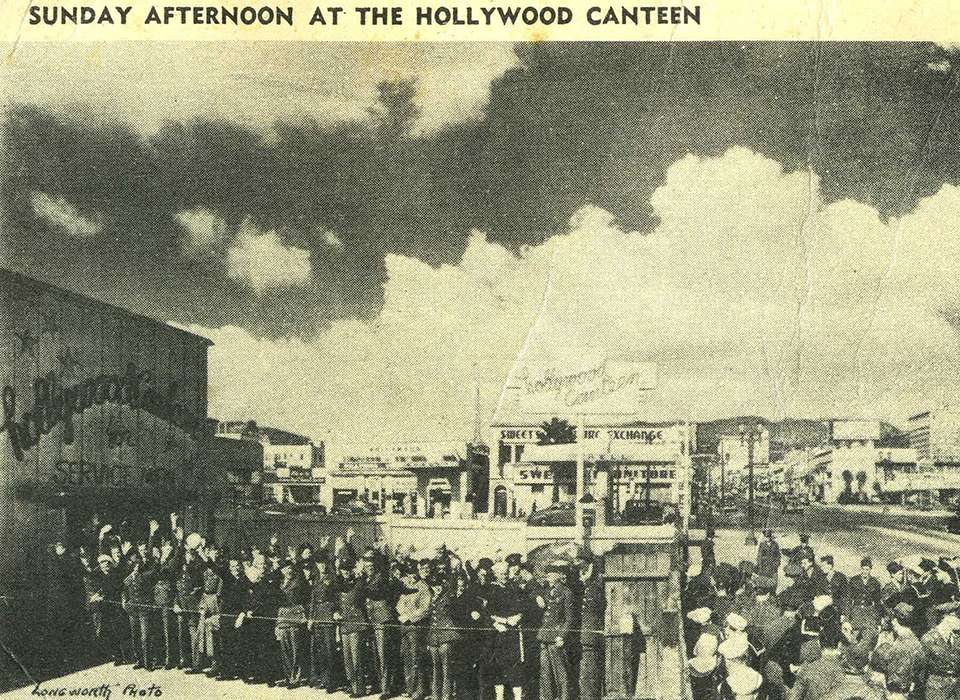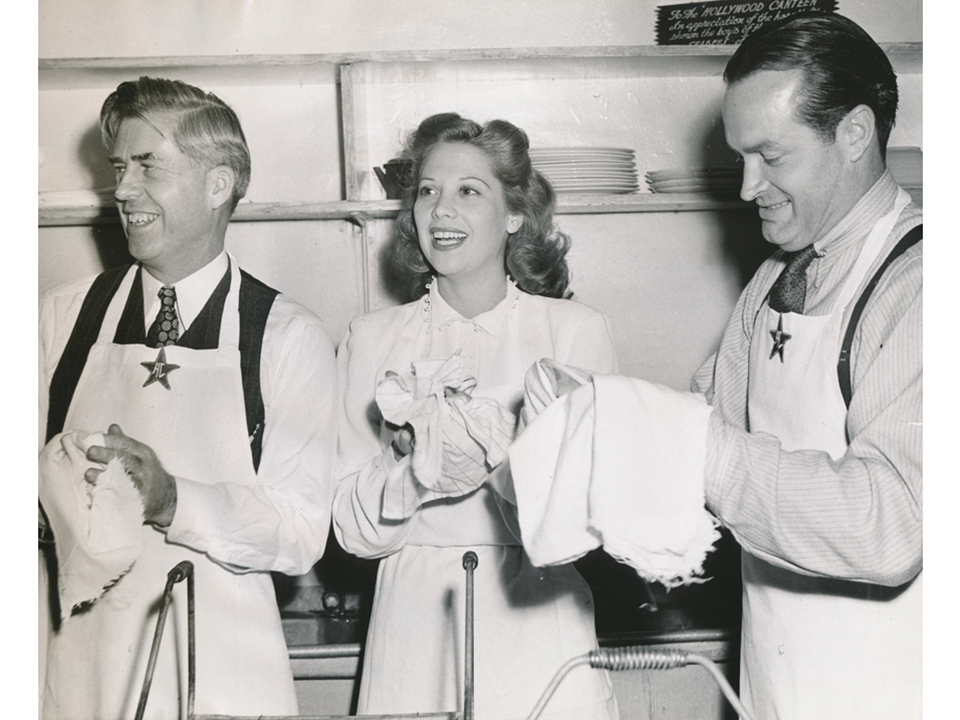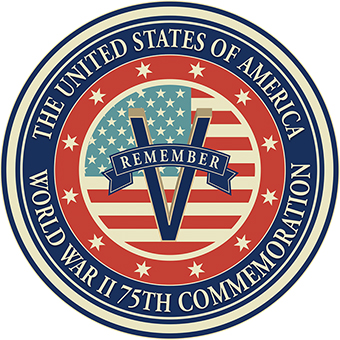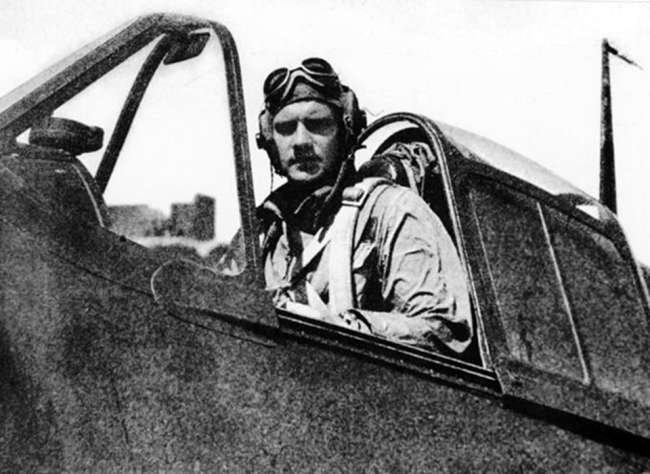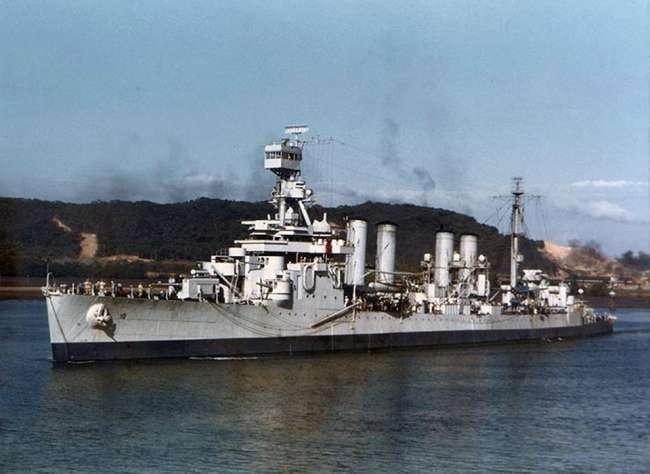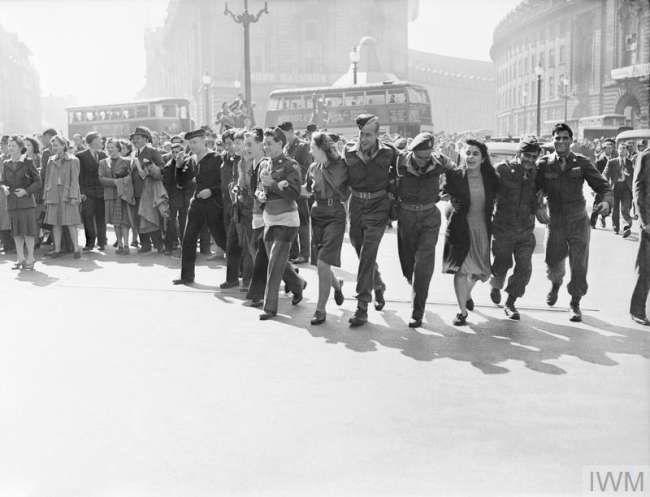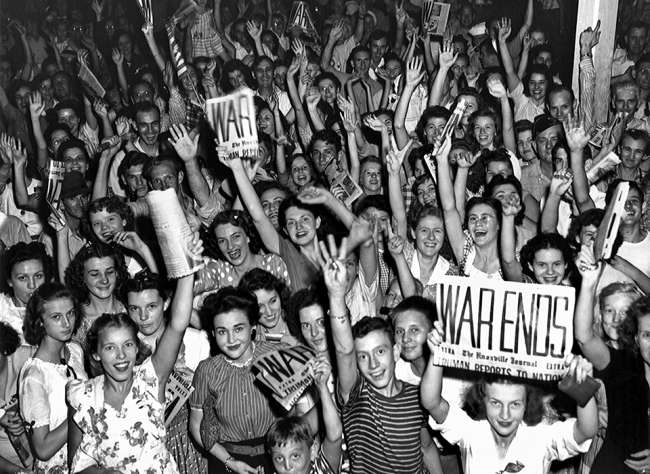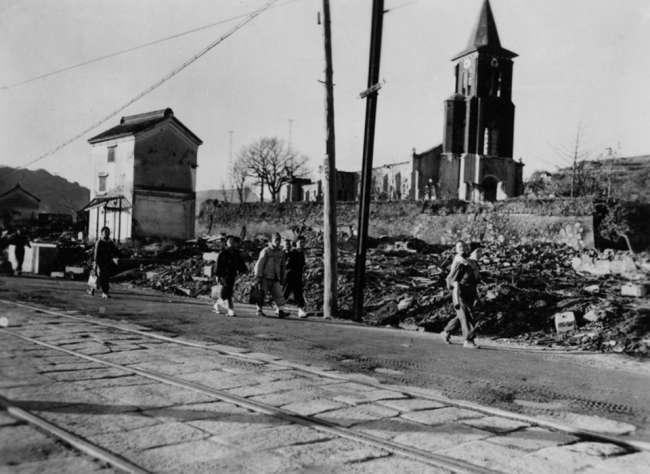Thanksgiving 1945 was the first major holiday that many Americans in service would spend back in the United States after years away from home. As the world transitioned to peacetime celebrations observed together with family, wartime practice and institutions began to wind down. The Hollywood Canteen, which had been in operation since October 1942, closed its doors after one last hurrah on Thanksgiving Day, November 22, 1945.
The entertainment venue was exclusively for servicemen and women and entrance to the canteen was free. Needless to say, it was tremendously popular. The capacity of 2,000 guests was always met, with a packed canteen and lines of troops waiting to get inside. Guests were asked to keep their visits to an hour in order to accommodate more patrons. Most were far from home, in training in California or on their way overseas. Some had never been in a large city before and most had never seen the glamour and glitz of Hollywood. Yet the canteen’s atmosphere was normally not one of red carpets and spotlights, but rather a distinctly western atmosphere, playing off of the site’s former use as a livery stable.
Three hundred volunteers spread out over two shifts staffed the canteen during the nightly hours of 7 p.m. to midnight, with modest Sunday hours of 2 p.m. to 8 p.m. Most of the volunteers were working Hollywood professionals—actors, set designers, artists, stylists, writers, composers, and other film industry members. Not all were famous, but movie stars and popular musicians were well represented on the dancefloors, on the stages, and in the kitchens and galleys of the Hollywood Canteen. Most of the supplies needed to operate were also donated.
Vice President Henry Wallace, Dinah Shore, and Bob Hope on dish duty at the Hollywood Canteen. Courtesy of the Bob & Dolores Hope Foundation.
The Hollywood Canteen was modeled after the Stage Door Canteen, which originated in New York City and spread throughout the United States, with facilities in London and Paris. But the Hollywood Canteen remained a separate independent entity. Co-founder Bette Davis (along with actor John Garfield) was a central presence and driving force behind the success of the operation. She served as President of the Hollywood Canteen and could be found there most nights. Davis, who would soon be the highest paid woman in America, is largely credited with the Hollywood Canteen’s integration policy. Most canteens and United Service Organizations (USO) venues practiced strict segregation, but the Hollywood Canteen was integrated, at least officially. Although most troops still socialized along color lines. Also unlike other canteens, women in uniform were permitted entry. However, many servicewomen later recalled not being permitted on the dance floor, but rather being relegated to balconies overlooking the action.
Bette Davis was not the only top performer to take a leading role in the canteen. Bob Hope, who had a young family and a burgeoning film and radio career, volunteered many times at the canteen. His performances bookended the Hollywood Canteen’s lifespan. Hope performed on the canteen’s opening night, October 3, 1942. On the evening of November 22, 1945, Hope and comedian Jack Benny headlined the canteen’s final performance.
When the Hollywood Canteen closed, the organization's $500,000 surplus was donated to veterans’ relief funds. Most of the funds were profits from two films, the 1943 musical comedy Thank Your Lucky Stars and the 1944 film Hollywood Canteen, a fictionalized account of a servicemen’s visit to the canteen. Both featured many of the stars who volunteered at the canteen and donated their salaries in support.
The former site of the canteen on the corner of Sunset Boulevard at 1451 Cahuenga Boulevard is unrecognizable today. Instead of the lines of servicemen waiting to be waited on and entertained by aproned celebrities, Hollywood tourists can see a parking garage and the neighboring high-rise. During the Hollywood Canteen’s three-year lifespan, more than 3,000 volunteers distributed three million packs of cigarettes and served six million pieces of cake, 125,000 gallons of milk, and nine million cups of coffee. The Hollywood Canteen had hosted and entertained nearly four million service members.
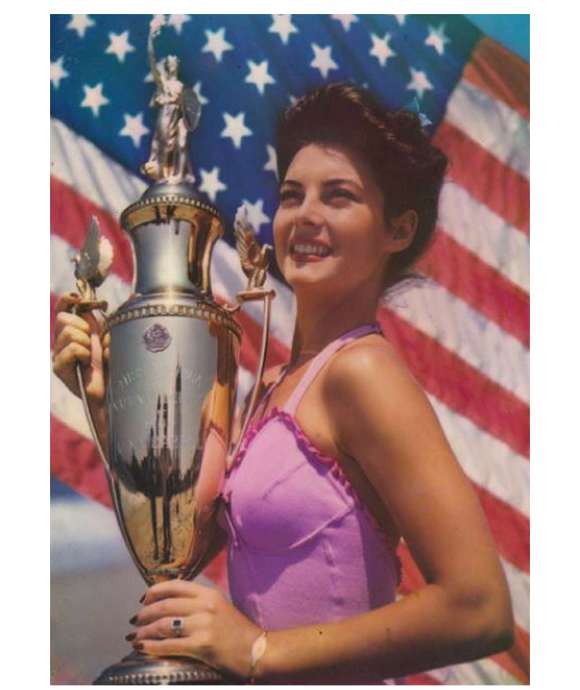
Hitting the Road with the Hollywood Victory Caravan
Starlet Alma Carroll barnstormed the country to raise money for the war effort with Bob Hope, Cary Grant, Laurel and Hardy, James Cagney, Humphrey Bogart, Barbara Stanwyck, Bing Crosby, and others.
This article is part of a series commemorating the 75th anniversary of the end of World War II made possible by the Department of Defense.
Kim Guise
Kimberly Guise holds a BA in German and Judaic Studies from the University of Massachusetts Amherst. She also studied at the Universität Freiburg in Germany and holds a masters in Library and Information Science (MLIS) from Louisiana State University. Kim is fluent in German, reads Yiddish, and specializes in the American prisoner-of-war experience in World War II.
Cite this article:
MLA Citation:
APA Citation:
Chicago Style Citation:
